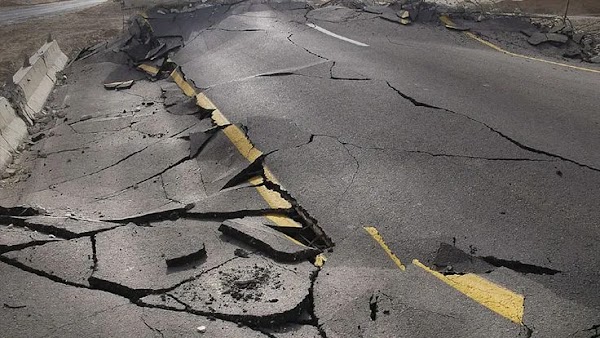Earthquake: Nature's Unpredictable Fury
In
a world of constant change and evolution, one of the most unpredictable and powerful natural phenomena is an earthquake. This article delves into the world of earthquakes, their causes, effects, and the measures taken to mitigate their destructive potential. Let's embark on a journey to understand the inner workings of the Earth's powerful forces.
Introduction
What is an Earthquake?
Earthquakes are geological events that occur when there is a sudden release of energy in the Earth's crust, leading to the shaking of the ground. This release of energy can cause immense destruction and has captured the imagination of scientists and the general public for centuries.
The Earth's Tectonic Plates
The Earth's Dynamic Crust
The Earth's crust is divided into numerous tectonic plates that constantly interact with one another. These interactions are the primary cause of earthquakes. When these plates move, they can either collide, pull apart, or slide past each other, creating a build-up of stress along plate boundaries.
Causes of Earthquakes
Plate Tectonics: The Main Culprit
The majority of earthquakes are caused by the movement of tectonic plates. As plates interact, stress is accumulated and eventually released in the form of seismic waves. Other causes, such as volcanic activity and human-induced activities like mining, can also trigger earthquakes.
The Richter Scale
Measuring Earthquake Magnitude
The Richter scale, developed by Charles F. Richter in 1935, is used to measure the magnitude of earthquakes. It quantifies the energy released by an earthquake and provides a way to compare the intensity of different seismic events.
Seismic Waves
Understanding the Tremors
When an earthquake occurs, it generates seismic waves that travel through the Earth's crust. These waves come in various types, including P-waves and S-waves, each with its own unique properties and effects.
The Impact of Earthquakes
Destruction and Chaos
Earthquakes can cause significant damage, including collapsing buildings, triggering landslides, and even generating tsunamis in coastal areas. The aftermath of a strong earthquake can be catastrophic, leading to loss of life and property.
Earthquake Preparedness
Staying Safe
Preparation is key to minimizing the impact of earthquakes. Developing emergency plans, securing heavy objects, and creating earthquake-resistant infrastructure are just a few measures taken to protect communities from the devastation earthquakes can cause.
Earthquake Early Warning Systems
A Glimpse into the Future
Several regions around the world have implemented early warning systems that can provide a few seconds to a minute's notice before the arrival of strong seismic waves, allowing people and infrastructure to prepare.
Conclusion
In the grand scheme of our planet's history, earthquakes are a testament to the ever-changing nature of Earth. As we continue to study and understand these geological events, we improve our ability to predict, mitigate, and adapt to their potential destruction.
FAQs
1. Are earthquakes predictable?
Earthquakes are notoriously difficult to predict accurately. While scientists can identify areas of high seismic activity, predicting the exact timing and magnitude of an earthquake remains a significant challenge.
2. Can humans induce earthquakes through activities like fracking?
Yes, human activities like fracking have been known to induce small earthquakes, but they are generally of lower magnitude than natural seismic events.
3. What is the deadliest earthquake in history?
The 1556 Shaanxi earthquake in China is often considered the deadliest earthquake, with an estimated death toll of over 800,000 people.
4. How can I prepare for an earthquake?
Preparing for an earthquake includes securing heavy objects, creating an emergency plan, and having essential supplies such as food, water, and first-aid kits readily available.
5. Can earthquakes trigger volcanic eruptions?
Yes, earthquakes can trigger volcanic eruptions, especially in areas with active volcanoes. The movement of tectonic plates can lead to the release of pressure, potentially triggering volcanic activity.
Earthquakes are a natural phenomenon that we must learn to coexist with. By understanding their causes, and effects, and preparing for their occurrence, we can reduce the impact of these seismic events on our lives and communities.
.webp)



.webp)


Comments